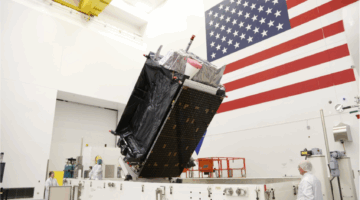
WASHINGTON: A year-old Pratt & Whitney effort to free up a handful of its engineers to think big has already caught the eye of the Air Force, which has asked the company’s GatorWorks shop to pitch in on key research and development projects.
Earlier this year, the Air Force Research Lab launched a series of “Vanguard” programs to push the development of leap-ahead technologies. The plan is to push a full 20 percent of its S&T funding into these projects to test the limits of what’s possible while developing new technologies quickly, and relatively cheaply. To do that, the Air Force has tapped GatorWorks to team with other contractors on some of those efforts.
“This is not traditional R&D,” GatorWorks boss Dave Stagney told me. “If we go into these programs thinking only about propulsion, we all lose.” Instead, his team is looking at the Vanguard programs as something “challenging us to break out of our silos — to take a step back and think differently about how we actually deliver new capabilities. I challenged the team to think about the problem differently, because people can try out ideas in a way that is freeing them up and not so risk averse.”
While Pentagon efforts like DIU started by Ash Carter during the Obama administration have been pushing closer ties between Silicon Valley and the Pentagon, not all innovation has to come from the Bay Area, especially when it comes to military hardware.
“Because we’ve created this idea incubator where we’re willing to try out of a bunch of ideas and learn together with the customer, our approach is very different from anything anyone else is doing,” Stagney said. “Our leadership team has challenged us to try out new things and not be afraid to fail.”
The idea of embracing the potential for failure is something Pentagon officials — from research and engineering chief Michael Griffin to acquisition head Ellen Lord — have preached constantly over the past two years. While their rhetoric has embraced the idea, it remains to be seen what the real world impacts of this new way of doing business might be.
The Vanguard programs, and work GatorWorks is doing on potential upgrades for the B-52, F-22 and F-35 engines shows that small shops set up within defense giants can mimic the innovation and speed of startups, but with Pentagon money behind them.
“We need that partnership with customers on the DoD side where they’re willing to take a step forward with us in understanding that neither one of us knows the ultimate answer,” Stagney said. “The whole point is to learn and develop something new and not overly constrain and pre-plan what the outcome is going to be.”
That acceptance of failure, and the unsentimental cutting of underperforming programs or near misses was underscored last month when the Pentagon canceled a billion dollar contract with Boeing and Raytheon for a new ballistic missile interceptor, putting a stop to an effort that had been riddled with problems. “Development programs sometimes encounter problems,” Griffin said at the time. “After exercising due diligence, we decided the path we’re going down wouldn’t be fruitful, so we’re not going down that path anymore.”
One of the guiding principles behind GatorWorks is to “use all of Pratt & Whitney’s intellectual property, don’t hurt anyone and don’t break the law,” Matthew Bromberg, president of the company’s military engines division, told me last year.
Given the rapid rise of the Chinese military, and America’s aging ships, planes, and vehicles, the US military is desperately trying to modernize. The demand for faster, cheaper, better has likely never been higher. And it’s coming directly from the top. Speaking at the annual Air Force Association meeting today, Defense Secretary Mark Esper revealed he’s undertaking his own review of the 2018 National Defense Strategy, and he’s trying to “better understand and balance the needs of today with the requirements of tomorrow,” while addressing the “tradeoff of building readiness with consuming readiness.”
Readiness is a key issue for the armed services, and Stagney said that the Air Force “is most interested right now in how they improve sustainment costs.” His team is looking at different solutions like additive manufacturing for how to both manufacturer and move needed parts out to the flightline more quickly, and more cheaply.
If there’s one thing that unites every Pentagon office in the current environment, it’s the desire to scrap older, underperforming or outdated gear and reap the savings to pump into new technologies. The Army says it has already saved some $30 billion by shedding fat, and the Air Force hinted this week they have found similar savings, and will reinvest it in Multi-Domain Operations and space capabilities

